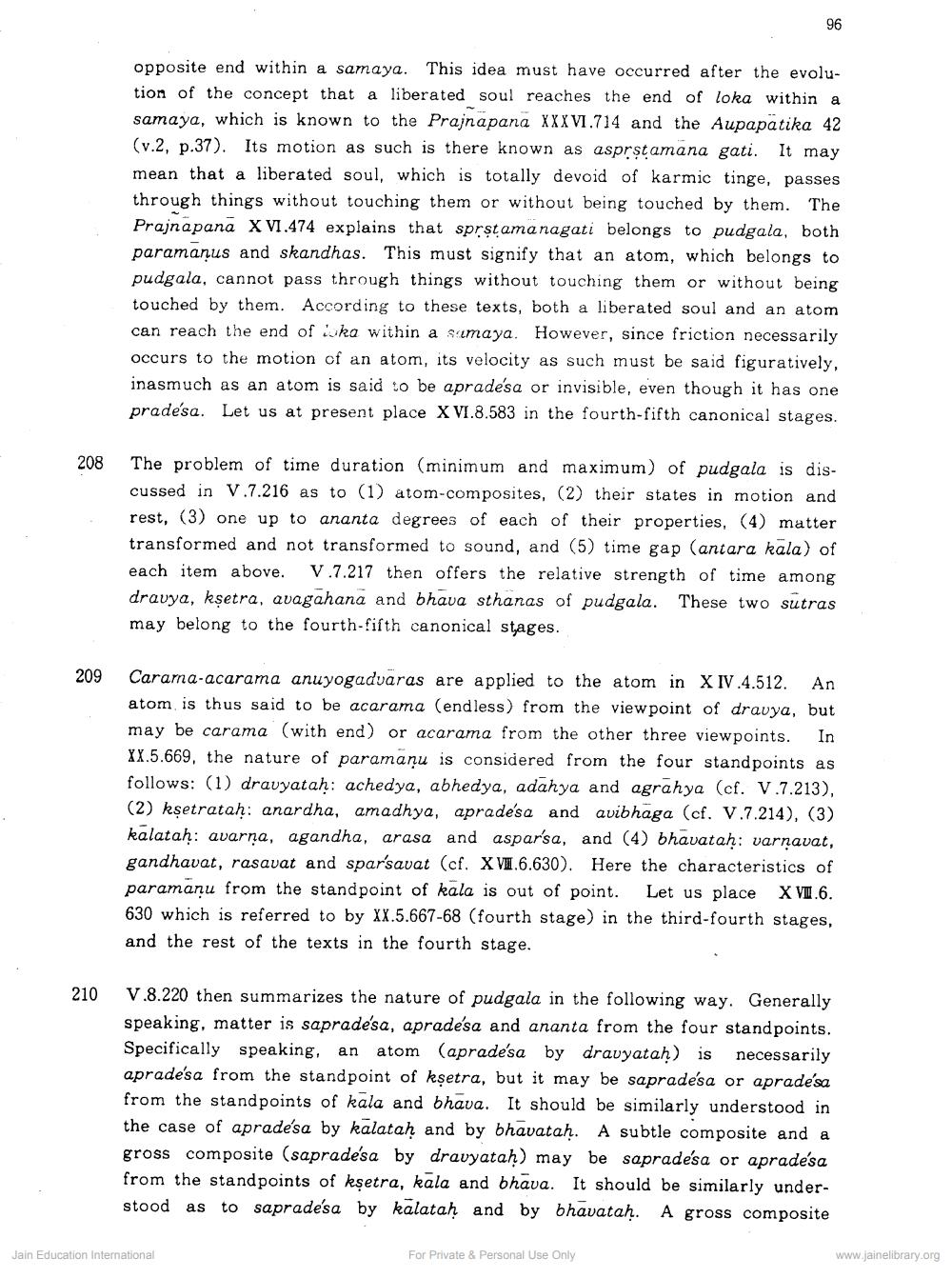________________
opposite end within a samaya. This idea must have occurred after the evolution of the concept that a liberated soul reaches the end of loka within a samaya, which is known to the Prajnapana XXXVI.714 and the Aupapatika 42 (v.2, p.37). Its motion as such is there known as asprstamana gati. It may mean that a liberated soul, which is totally devoid of karmic tinge, passes through things without touching them or without being touched by them. The Prajnapana XVI.474 explains that sprstamanagati belongs to pudgala, both paramanus and skandhas. This must signify that an atom, which belongs to pudgala, cannot pass through things without touching them or without being touched by them. According to these texts, both a liberated soul and an atom can reach the end of luka within a simaya. However, since friction necessarily occurs to the motion of an atom, its velocity as such must be said figuratively, inasmuch as an atom is said to be apradesa or invisible, even though it has one pradesa. Let us at present place X V1.8.583 in the fourth-fifth canonical stages.
208
The problem of time duration (minimum and maximum) of pudgala is discussed in V.7.216 as to (1) atom-composites, (2) their states in motion and rest, (3) one up to ananta degrees of each of their properties, (4) matter transformed and not transformed to sound, and (5) time gap (antara kala) of each item above. V.7.217 then offers the relative strength of time among dravya, kşetra, avagahana and bhava sthanas of pudgala. These two sutras may belong to the fourth-fifth canonical stages.
209
Carama-acarama anuyogadvaras are applied to the atom in XIV.4.512. An atom is thus said to be acarama (endless) from the viewpoint of dravya, but may be carama (with end) or acarama from the other three viewpoints. In XX.5.669, the nature of paramaņu is considered from the four standpoints as follows: (1) dravyatah: achedya, abhedya, adahya and agrahya (cf. V.7.213), (2) kşetratah: anardha, amadhya, apradesa and avibhaga (cf. V.7.214), (3) kalatah: avarna, agandha, arasa and aspar'sa, and (4) bhavatah: varnavat, gandhavat, rasavat and sparsavat (cf. X V1.6.630). Here the characteristics of paramanu from the standpoint of kala is out of point. Let us place X VI.6. 630 which is referred to by XX.5.667-68 (fourth stage) in the third-fourth stages, and the rest of the texts in the fourth stage.
210
V.8.220 then summarizes the nature of pudgala in the following way. Generally speaking, matter is saprade'sa, aprade'sa and ananta from the four standpoints. Specifically speaking, an atom (aprade'sa by drauyatah) is necessarily aprade'sa from the standpoint of kşetra, but it may be sapradesa or aprade'sa from the standpoints of kala and bhava. It should be similarly understood in the case of aprade'sa by kalataḥ and by bhavataḥ. A subtle composite and a gross composite (saprade'sa by dravyataḥ) may be sapradesa or aprade'sa from the standpoints of kşetra, kala and bhāva. It should be similarly understood as to saprade'sa by kalataḥ and by bhavataḥ. A gross composite
Jain Education International
For Private & Personal Use Only
www.jainelibrary.org




